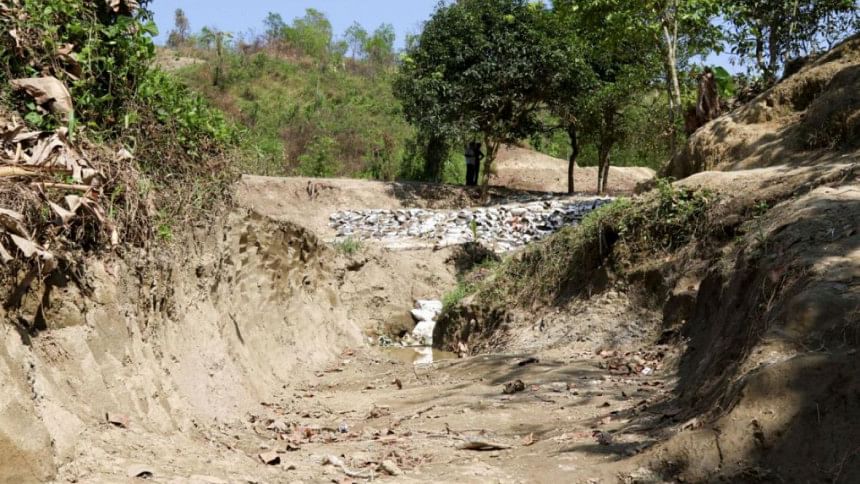Illegal dam construction: The problem is not with laws but with their implementation

The lead item in the front page of The Daily Star on April 28 tells the story of a steel factory that has constructed a makeshift dam on a stream bordering the Jangal-Bashbaria reserve forest in Sitakunda. The question is how this is possible in the first place. The diverted water is causing havoc for at least seven streams downhill which are on the verge of drying up and threatens to both adversely affect the forest's biodiversity and deprive the people of an indigenous village of water supply. Investigative reporting by this paper has found that the company which recently constructed a new factory has also dug a 100-metre canal to channel the water away from the stream and filled up 1.26 acres of pond in the Kumira area to expand its factory.
The factory in question has 4,200 workers and the company authorities have stated that it had tried to bore for underground water but nothing was found 1,000 feet down. The factory will need 220,000 litres of water for drinking purposes and a further 60 million litres of water to operate the factory on a daily basis. Water is needed in various steps in a steel plant. It is used for cooling, boiler feed water, intake water—where water is pumped to the steel from water source. In fact, it would be impossible to list all the uses of water in a factory of this kind where access to a continuous supply of water is an essential prerequisite to making steel.
The forest official responsible for the area has alleged that the company built the dam overnight employing hundreds of labourers. "They built the dam by dumping sandbags. They even cut a hill to direct water to their steel factory. Drying up of the streams will wreak havoc on the wildlife of the reserve forest and people living downstream," he said. Those living in the Tripura Palli, home to some 200 indigenous families, are simply too afraid to comment on the development fearing retribution, but they are at the forefront of the damage if water flow is not restored. And it is not only the indigenous communities that are intimidated, the forest authorities also were allegedly threatened when they went to stop the illegal developments.
We are told that a case has been filed against the company. The land department, forest department, department of environment and the district administration must get involved in what is clearly a case of encroachment and illegal construction, deliberately hampering the free flow of water that feeds several other smaller streams downhill. The fact that the factory failed to find sufficient water underground is its problem. That should have been part of the feasibility study before the construction of the factory. Again, forest resources cannot be utilised for company profits because there are people living in the area who are dependent on natural water that flows from the forest.
We have found through our own investigation that a hill has also been cut to direct water to the factory. So, there are ample grounds for action by multiple authorities here. The sad reality, of course, is that when it comes to industrialisation, conserving forest resources and biodiversity always takes a backseat in Bangladesh. As Bangladesh races ahead to reach the status of a middle-income country by 2021, we are confronted with finding that fine balance between biodiversity and destruction and exploitation of natural resources.
But the laws are quite explicit about nature conservation. We have enacted several pieces of legislation over the years to protect forest resources but we find that it is always forests that take the hammering when we look for industrial land. For instance, Bangladesh Environment Preservation Act 1995 (amended in 2000) states that cutting of hills without the approval of the authorities concerned is prohibited. It carries punishment up to two years imprisonment or a fine of Tk 200,000, or both, for a first offence. For subsequent offences, the punishment is up to 10 years' imprisonment or a fine of Tk 1 million or both.
It has never been a question of not having requisite laws, rather the stark absence of enforcement. The lack of oversight, regulation, and implementation of existing laws to protect the stream from an illegal construction, which has impeded the natural flow of water in this case, will inevitably have grave consequences for the people living downstream and effectively depopulate other streams of the fish population. We can only hope that the custodians of the forest and other relevant authorities will move to save this waterway and the biodiversity that is dependent on it.
Syed Mansur Hashim is Assistant Editor, The Daily Star.

 For all latest news, follow The Daily Star's Google News channel.
For all latest news, follow The Daily Star's Google News channel. 



Comments